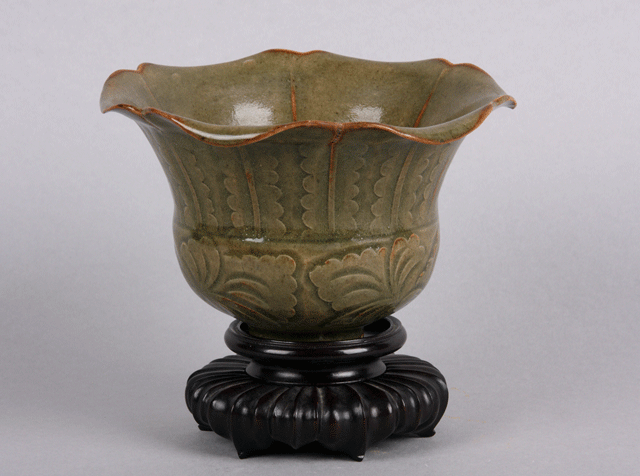
2012.91.85, celadon bowl with wood stand. Northern Song dynasty (A.D. 960–1127)
Eason Eige Collection; photo by B. Bernard

2012.91.85, celadon bowl with wood stand. Northern Song dynasty
(A.D. 960–1127)
Eason Eige Collection; photo by B. Bernard
Typically, celadon is a green glaze (in various shades) but
examples can be white, gray, blue, or yellow.
The color is produced during
firing, as ferric iron oxide (Fe2O3) is reduced to ferrous
iron oxide (FeO). Celadon was first made during the Han dynasty (206 BCE to
220 CE) but the technique was not perfected until the Northern Song dynasty
(960–1270 CE). Green celadon became immensely popular, in part because the
color reminded Chinese collectors of jade. Celadon-glazed pieces were widely
exported, including to the Middle East, and countries including Korea and Japan
began making their own celadon. Chinese celadon is still made today,
including at the traditional pottery-making village of
Chen Lu.
To see additional examples of celadon, please click on the images below.
To learn more: Chinese Glazes by Nigel Wood.
See source code for copyright information. Page last revised on January 29, 2016. Please report problems to toh@unm.edu